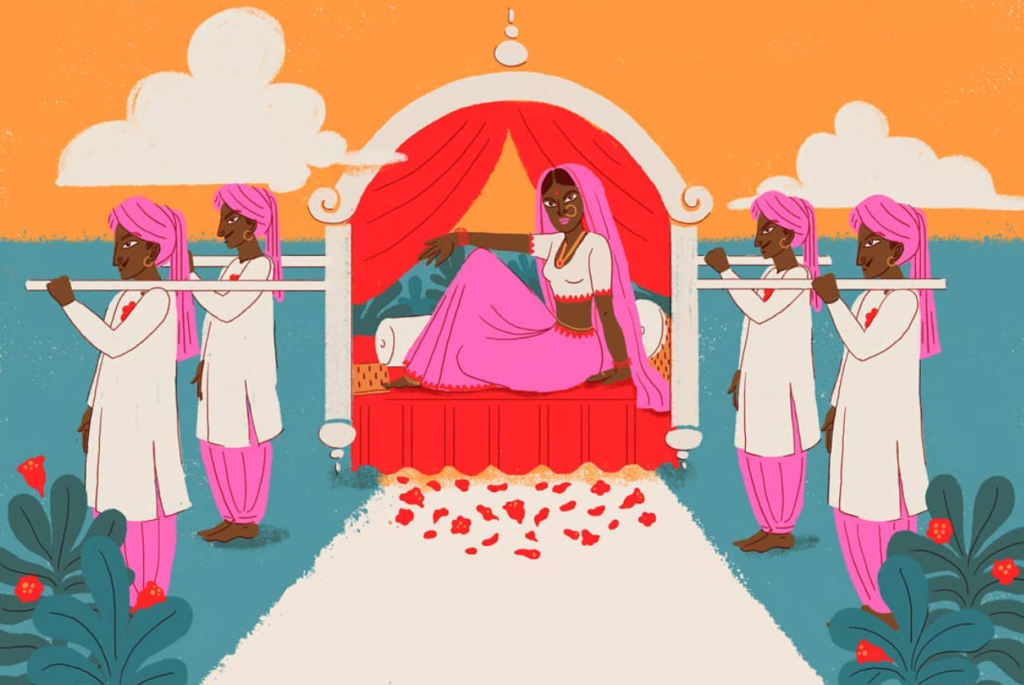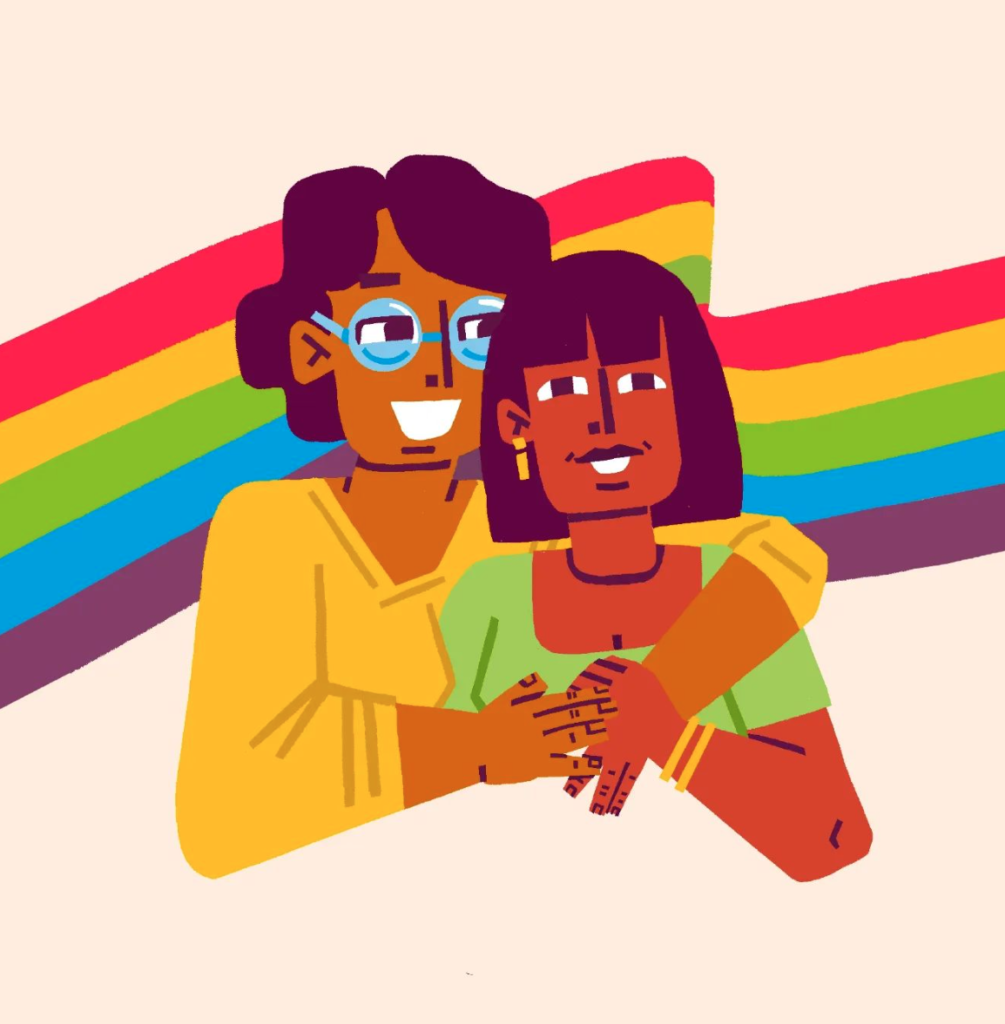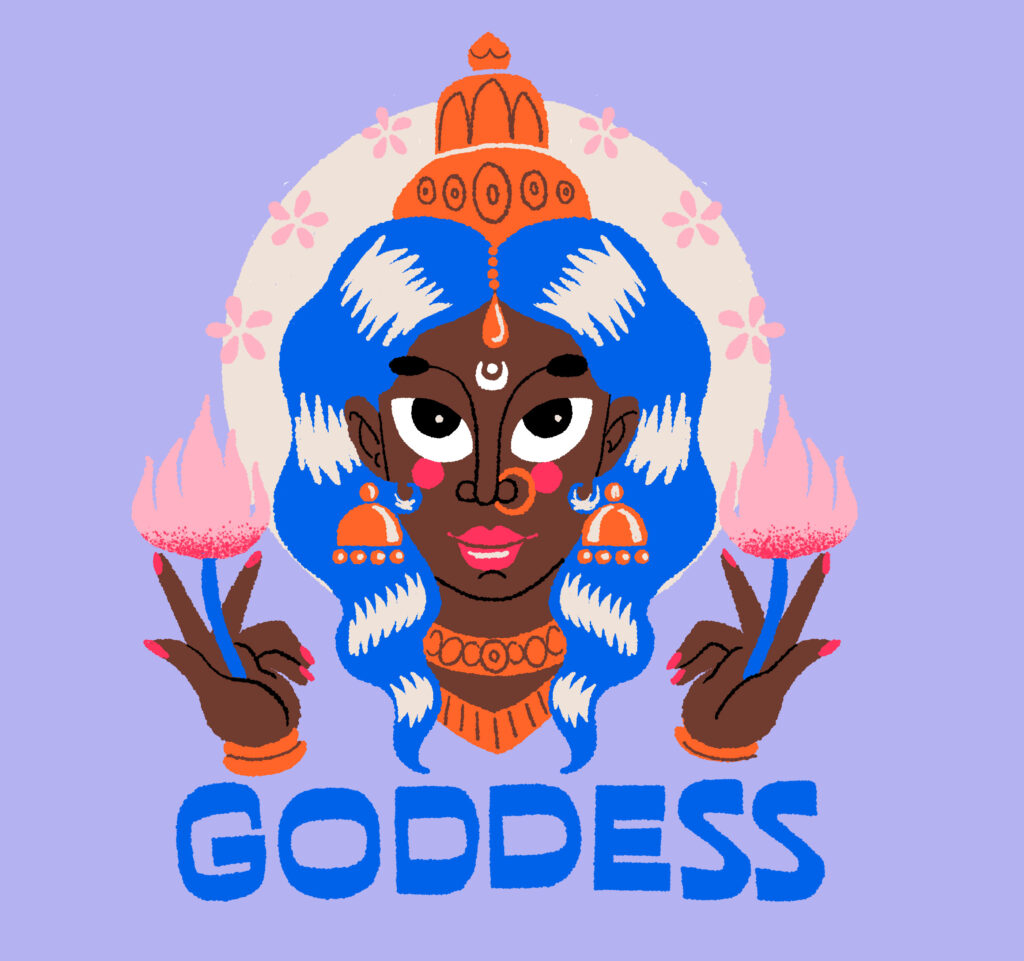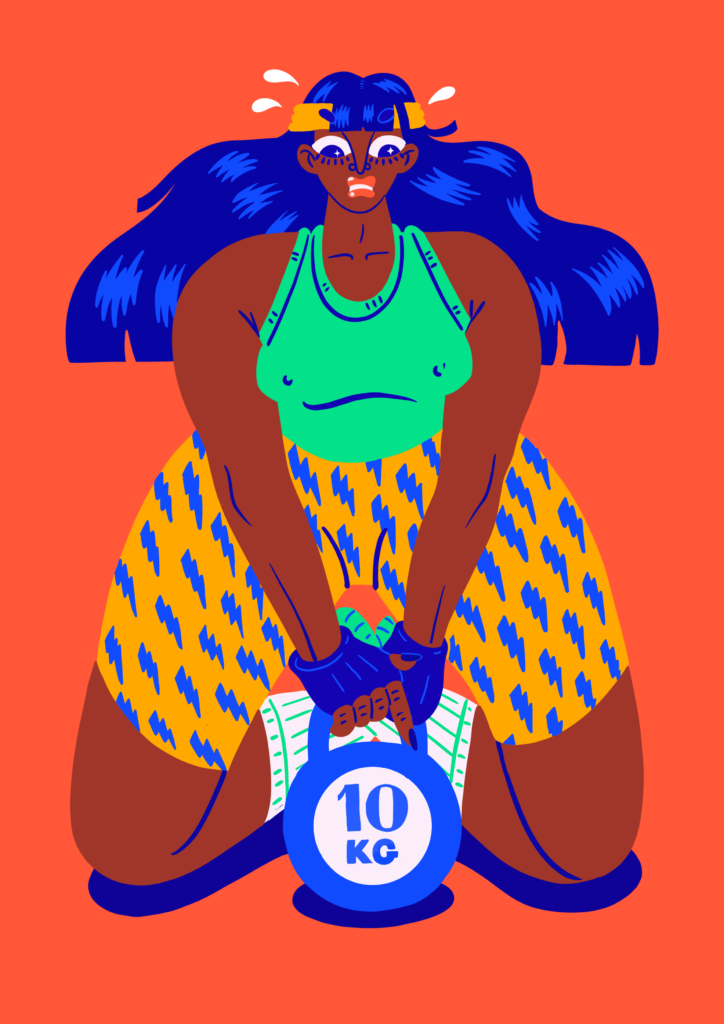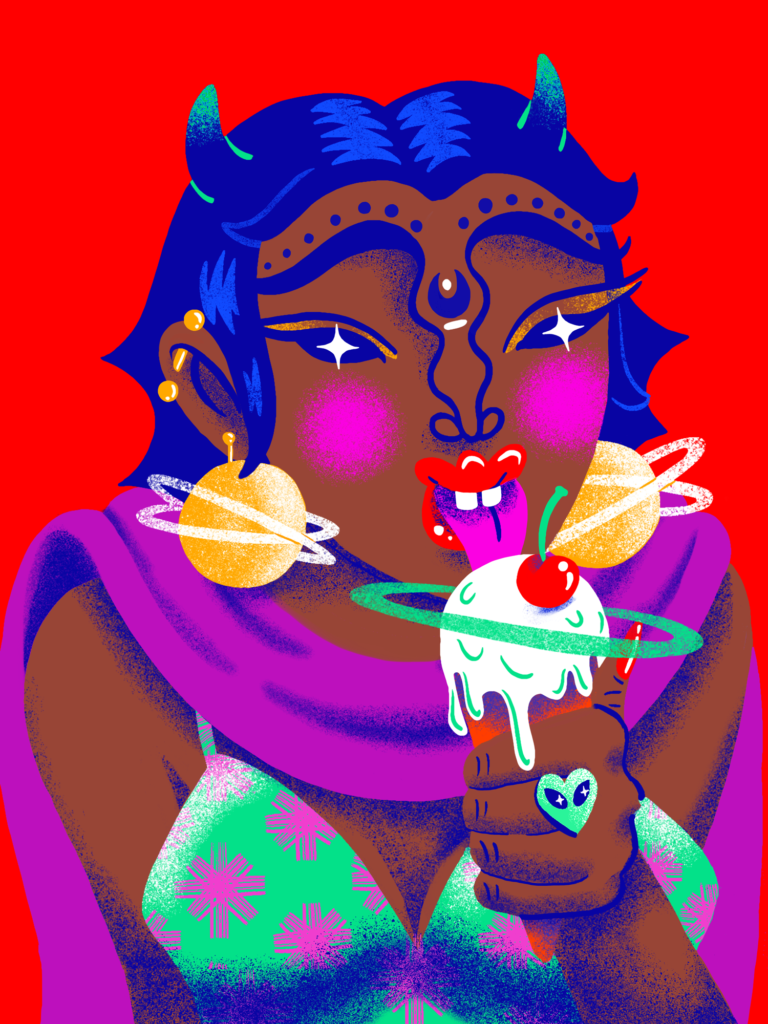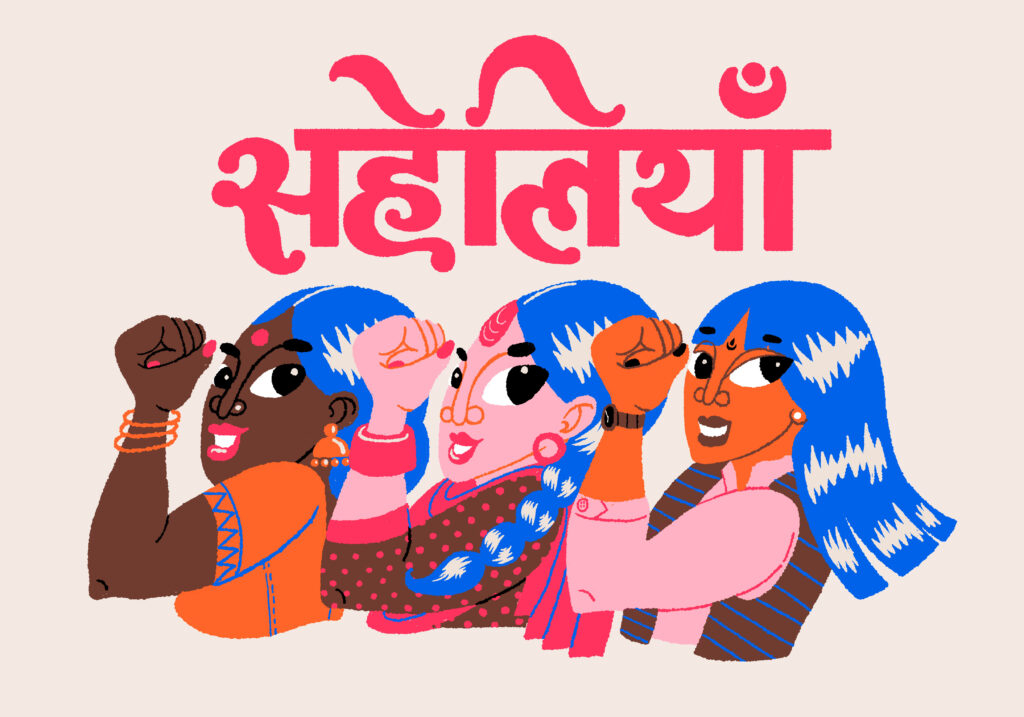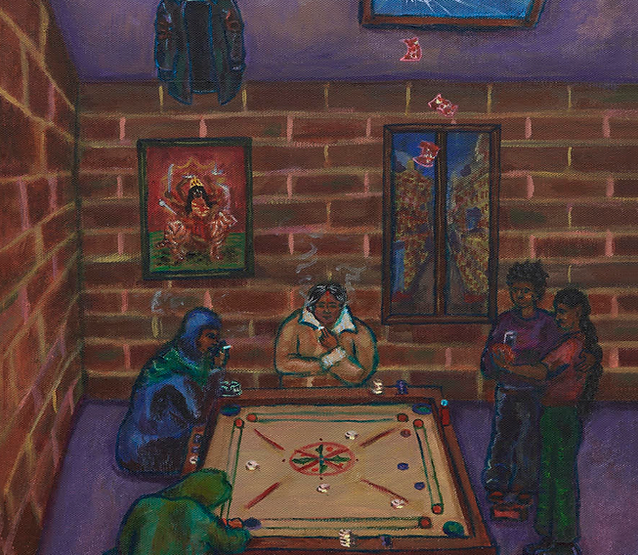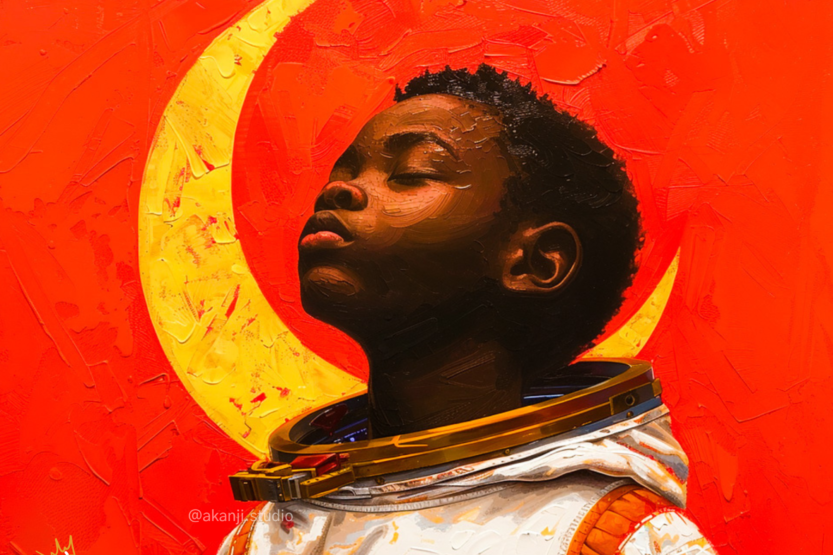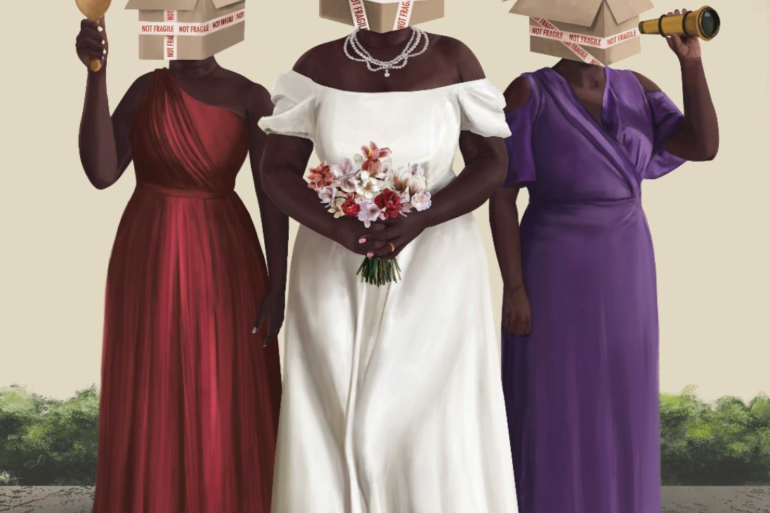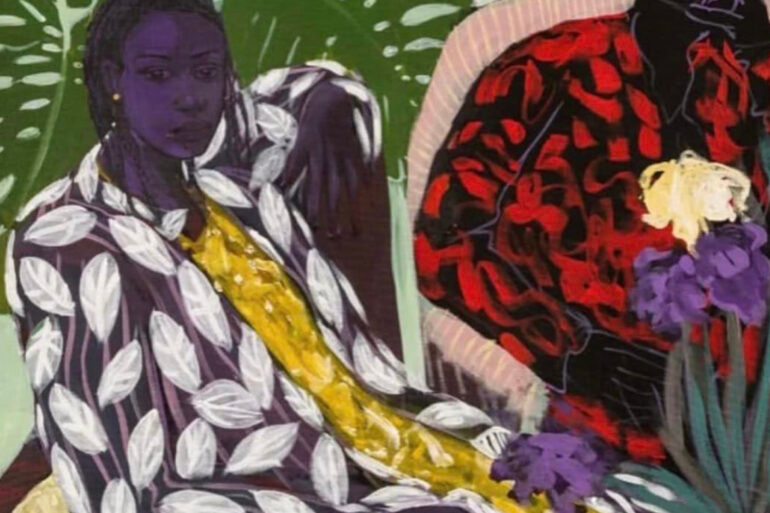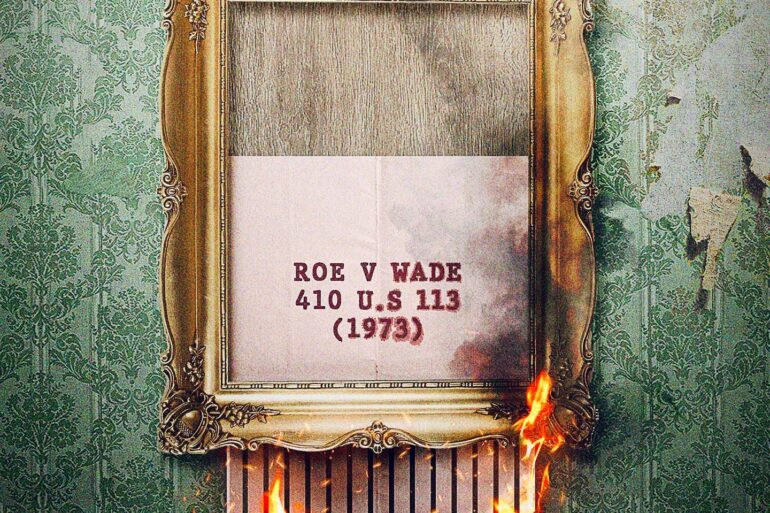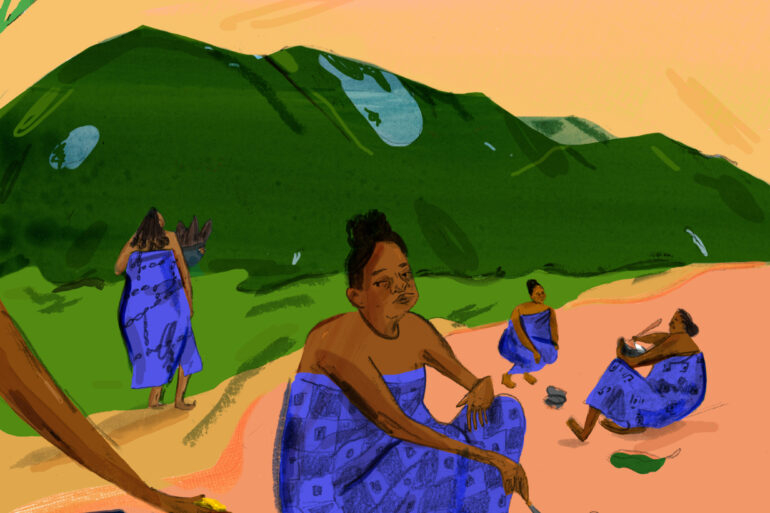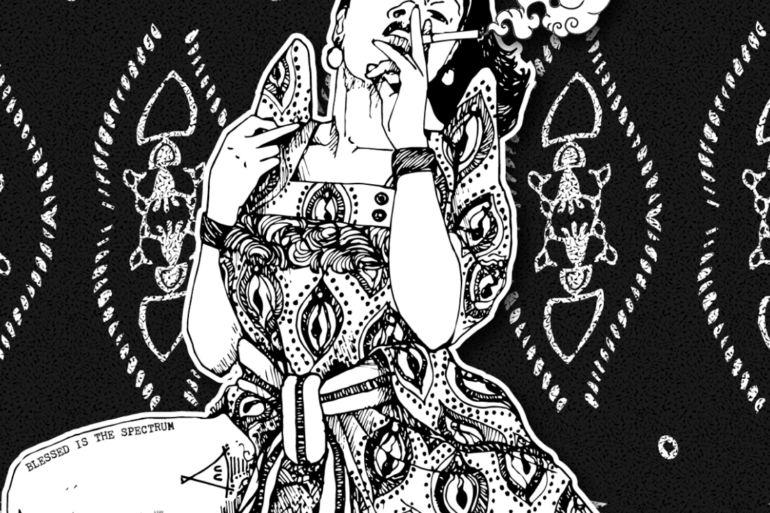Mira F. Malhotra is a Mumbai-based visual artist and illustrator. Mira is known for her memorable, colourful illustrations that tackle feminist themes for a modern India, incorporate pop culture references, animals and playful characters. She is heavily influenced by DIY, alternative culture and the punk rock ethos.
How has your lived experience shaped your practice?
I grew up in Saudi Arabia, and so was aware of being an immigrant as well as a young girl in that place. Luckily there were many immigrants, I grew up in a small compound of around 12 buildings, which had a mix of mostly Indian, Pakistani, Palestinians, Ethiopian and other Africans, etc. I also had Filipino friends and we practiced Christianity (hidden from view) as a community there. I moved here after the Gulf War (Saddam Hussein) and the culture shock was debilitating. It was extremely hard to adjust. Over time I realise my multicultural friend group was different and I grew to really know Indian culture and its nuances later, which helped shape my approach to work. I always believe that the best work comes from authentic experiences and influences rather than aping or copying something.
In Saudi Arabia we were in a sense a-cultural, while we had Indians and other south asians around us, we were still not in India, and no identifiable institutions – except our embassy school, and the Arab culture, besides food and shopping wasn’t accessible to us either so I subsisted on Channel 2 – watching American sitcoms and cartoons, bootlegs of madonna videos my older sisters acquired, supermarket packaging, etc. My entire influence was American culture, and I didn’t question it until much later when I was having mini identity crises about these things. My work really evolved from that, and I feel like it’s got the colour and saccharine sweet intensity from candy packaging, as well as the experience of being an outsider in India and an insider as well.
What are some of your biggest influences and motivations in your work? What issues are you passionate about working on?
I try to dress up social issues and academic ideas around gender, mental health in a more palatable or even playful, humorous, accessible format, so that people can enjoy it on both levels, but never being disrespectful to the issue at hand. I feel like a lot of speech in this space can feel more like a lecture and judgmental, when unfortunately lots of us are handed down archaic value systems or trauma that can make these ideas really difficult to get used to.
I like being much more shady or better, subtle about it in a sense, I don’t outrightly declare I’m feminist with the elements I use – like no rosie the riveter etc. – the work isn’t blatantly so, but its encoded to look normal and commonplace. I am particularly a fan of Sreejata Roy’s work, especially her piece outside Khirki, Delhi, of women in public drinking chai and congregating. It feels like a mundane act, but it’s loaded with questions because it looks odd, why is such an act of accessing public space feel out of the ordinary? Because we deny women leisure time outside the home, alone, in groups with other women. I love her approach to work and I like that such powerful work doesn’t have to have amazing aesthetic- its an image that can be easily replicated by anyone, and democratising such images is such a great idea.
I also want to talk about issues I discover that come up in therapy to me that I don’t see people talk about in art – an extension of the personal is the political – which is why I did a series on Indian families – how we portray ourselves, typical family systems, how children are brought up, and what certain family dynamics do to us.
Where are you based and what excites you about the creative community around you?
I feel like it’s coming into its own more and more, though I’ll admit I’m a homebody and do not participate that much in extroverted networking type gatherings – but it’s very exciting to see people bring politics into their work and I admire lots of my friends work, especially people who are conscious of what they’re making. It’s growing and I’m here for it and love to support my (new) friends!
See more of Mira’s work HERE
